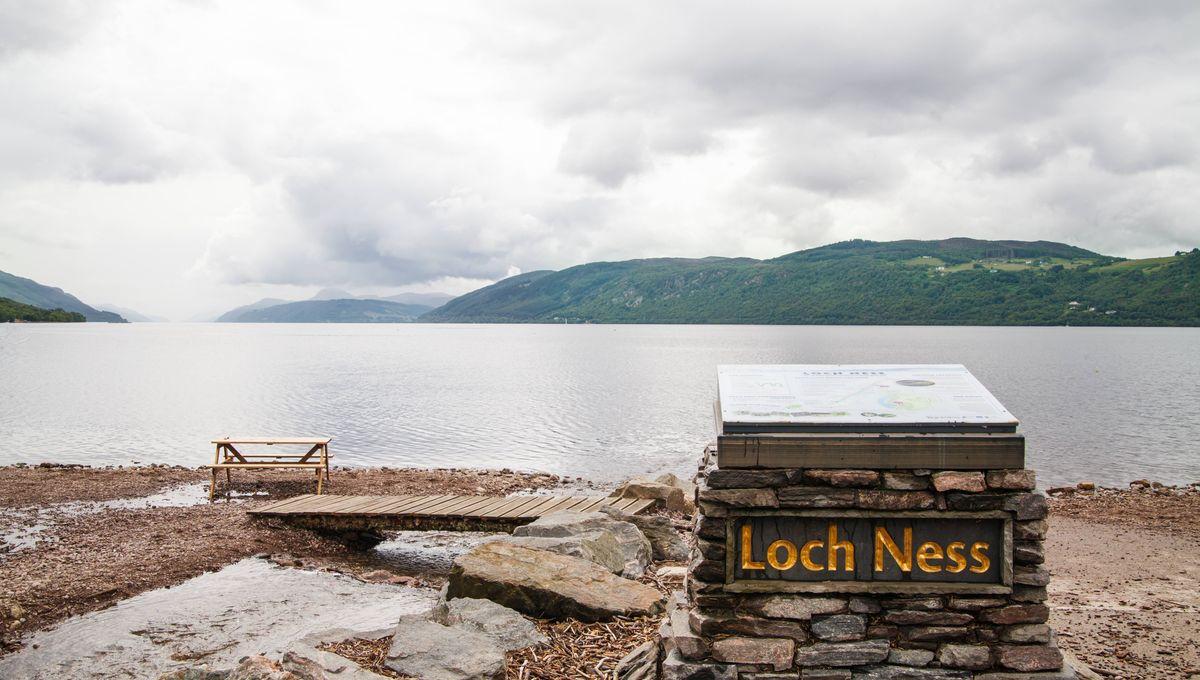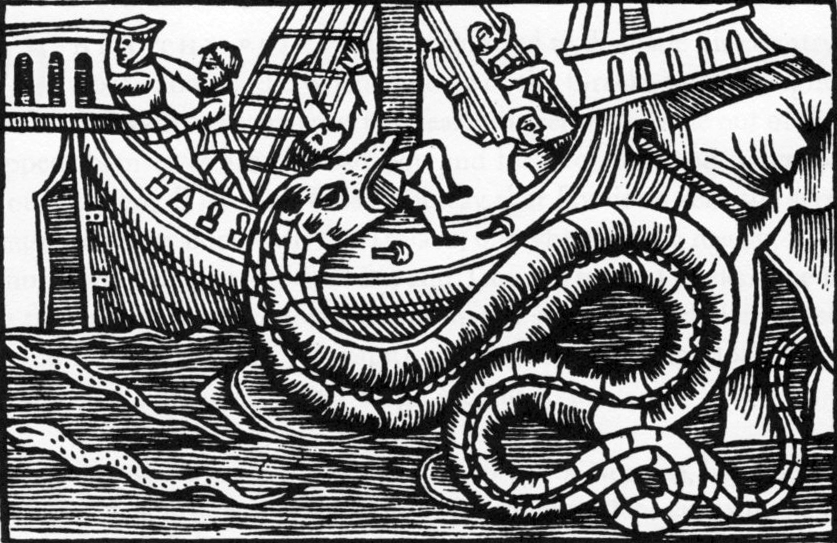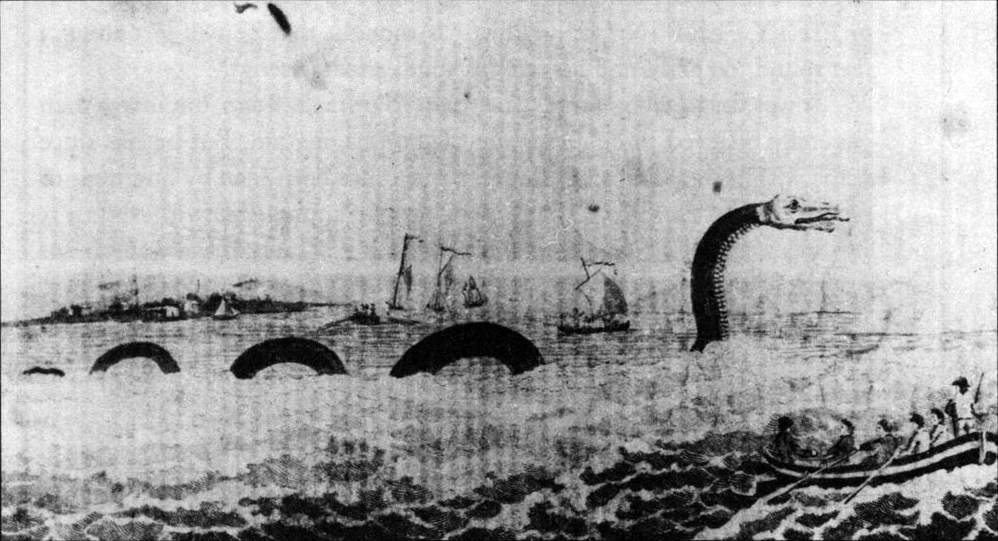Loch Ness Monster Sightings Don’t Match “Impossible” Images Of The Beast – So What Are People Seeing?

Loch Ness Monster Sightings Don’t Match “Impossible” Images Of The Beast – So What Are People Seeing?
There’s something funny about how sea or aquatic monsters are depicted. Think about the Loch Ness Monster, for example. How many times have you seen images or drawings showing a beastie poking its head above the water while a vertical undulating serpent-like body follows behind? This particular representation of the mythical “Nessie” is pretty illustrative of many other sea monsters, but it raises a question: do such depictions of supposed monsters influence the accounts of people who claim to see such creatures in the wild?
Humans have been describing aquatic monsters from across the world for centuries, if not longer. For instance, ancient authors like Pliny the Elder described them in his Natural History, which was published around 77-79 CE. There are depictions of sea monsters in many forms of Greco-Roman art, and similar creatures feature in the traditions of other cultures too. They appear frequently on maps and encyclopedias during the medieval period, and then stories of encounters with such terrible beasties become more widespread in the 18th century as naval and maritime industries expand across the oceans. But where did the idea that they were snaky, undulating creatures come from? Because, as far as we know, this physiology is impossible in nature. Of course, snakes and eels have undulating bodies, but they undulate horizontally, not vertically, like a slinky going down some stairs. At the same time, this type of movement would be extremely inefficient for swimming, so it is not likely any real aquatic animal moves like this. The first unambiguous depictions of this type of body – of an unequivocal giant sea serpent with a hooped undulating body that rises above the water – appears in the works of Olaus Magnus, during the 16th century. From here, this type of depiction becomes more common and continues well into the 19th century when artists attempted to set down the descriptions provided by seafarers (even if the stories themselves involved humped creatures, rather than obviously arched bodies). The earliest depictions of a sea monster with undulations above the water appeared in the work of Olaus Magnus, but became more common after that. Image credit: Historia de Gentibus Septentrionalibus via Wikimedia Commons (public domain) It is at this point that the arched undulating sea serpent motif becomes well-established and it went on to become the way of imagining the Loch Ness Monster when it became popular in the 20th century. In particular, the hooped image of Nessie frequently appeared on postcards and is still used today to advertise the famous mythical beast. In their latest study, Dr Charles Paxton of the University of St Andrews and Adrian Shine of the Loch Ness Project explored the prevalence of these depictions of Nessie and other undulating monsters in relation to the types of things people claim to have seen. They found that about 25 to 35 percent of all Nessie postcards show a hooped creature. By the 19th century, sea monsters were often depicted as being large snake-like creatures with the characteristic arches trailing behind them, such as in this depiction of the sea serpent at Cape Ann in 1639, drawn sometime between 1817 and 1821. Image credit: Ellis, R. 1994. Monsters of the Sea. Robert Hale Ltd. via Wikimedia Commons (public domain) However, those who claim to have seen Nessie rarely report hoops or even humps. In fact, only 1.5 percent of Nessie reports include descriptions of hoops or even humps. This suggests that witnesses are not influenced by the visual traditions associated with this creature, the authors argue. “The results suggest that a minimum of 1-3 percent of freshwater aquatic reports (if only considering “arch” and “loop”) should be regarded as misinterpreted (that is, the witnesses are reporting something they have not actually seen at all) or represent complete falsehoods,” Paxton and Shine write in their paper. This result is actually quite significant when it comes to the subject of cultural influences on supposed monster sightings. Previous work has suggested that how things are depicted in the media or other forms of popular representation have a strong impact on how people “experience” or perceive them. Or to put it another way, if you expect to see a snaky undulating monster in a Scottish loch, then that’s what you will see. But this does not seem to be the case. “There is a notable mismatch in the proportion of archiness in aquatic monster imagery in artwork and film and television and what witnesses actually report,” the authors say. This would suggest that where is in fact an actual underlying physical reality to what people are reporting, at least in terms of Nessie. Does this mean that people are actually seeing an unknown creature in the loch? Paxton isn’t convinced. It is more likely people are seeing “lots of different things”, he told IFLScience. This includes “birds, wakes, shadows, wind slicks, floating vegetation, and boats at a distance”. Ultimately, they are mistaking “indistinct objects” for the monster because they expect to see something, it just may not have a looping body. "In this case it really seems witnesses do not generally report the impossible, even though the hooped monster is a common portrayal of Nessie,” Paxton said in a statement. The study is published in the journal Endeavour.



